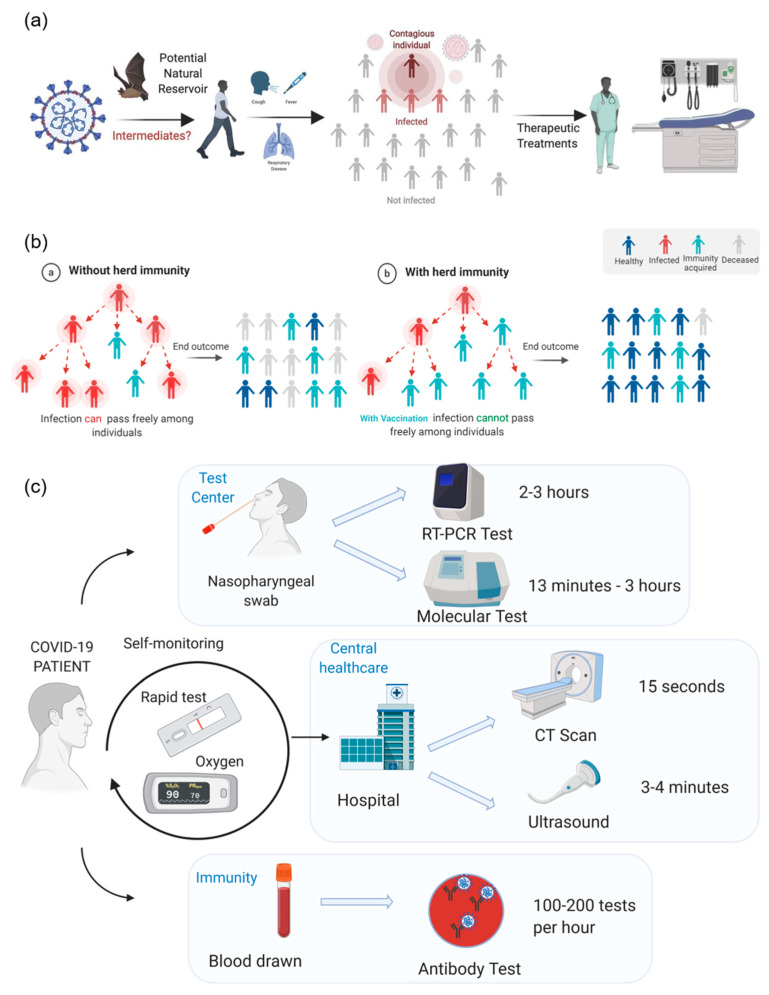Figure 1.
COVID-19 origins, transmission, immunity, and diagnostics. (a) Animals such as bats are a potential natural reservoir, and other intermediates facilitate the infection of coronavirus to humans. Human-to-human transmission is a common characteristic in three types of coronaviruses, severe acute respiratory syndrome coronavirus (SARS-CoV), SARS-CoV-2, and Middle East respiratory syndrome coronavirus (MERS-CoV). Even though the fatality rate is not lower than SARS-CoV and MERS-CoV, vaccines and treatments are needed; (b) Herd immunity plays an essential role in controlling the transmission of the disease. Without herd immunity, the virus will be available to get transferred from infected patients to any susceptible individual, resulting in a high infection rate and high mortality. On the other hand, herd immunity interrupts this chain of infection, resulting in better outcomes with less infected individuals and a significantly reduced the mortality rate; (c) The three main categories of COVID-19 diagnostics and the time-frame of each: laboratory test centers for current infection, medical screenings, antibody tests to determine immunity. Test centers use samples from nasopharyngeal swabs and test for COVID-19 infection via molecular or reverse transcription-polymerase chain reaction (RT-PCR) tests, with RT-PCR tests taking longer. Healthcare clinics and hospitals offer quick medical screenings via computed tomography (CT) scans or ultrasounds; ultrasounds are the safer option due to no radiation. The next step in rapid testing will be to test COVID-19 patients for antibodies against SARS-CoV-2 to see if the patient has the potential to fight reinfection and determine if the individual was previously sick.

